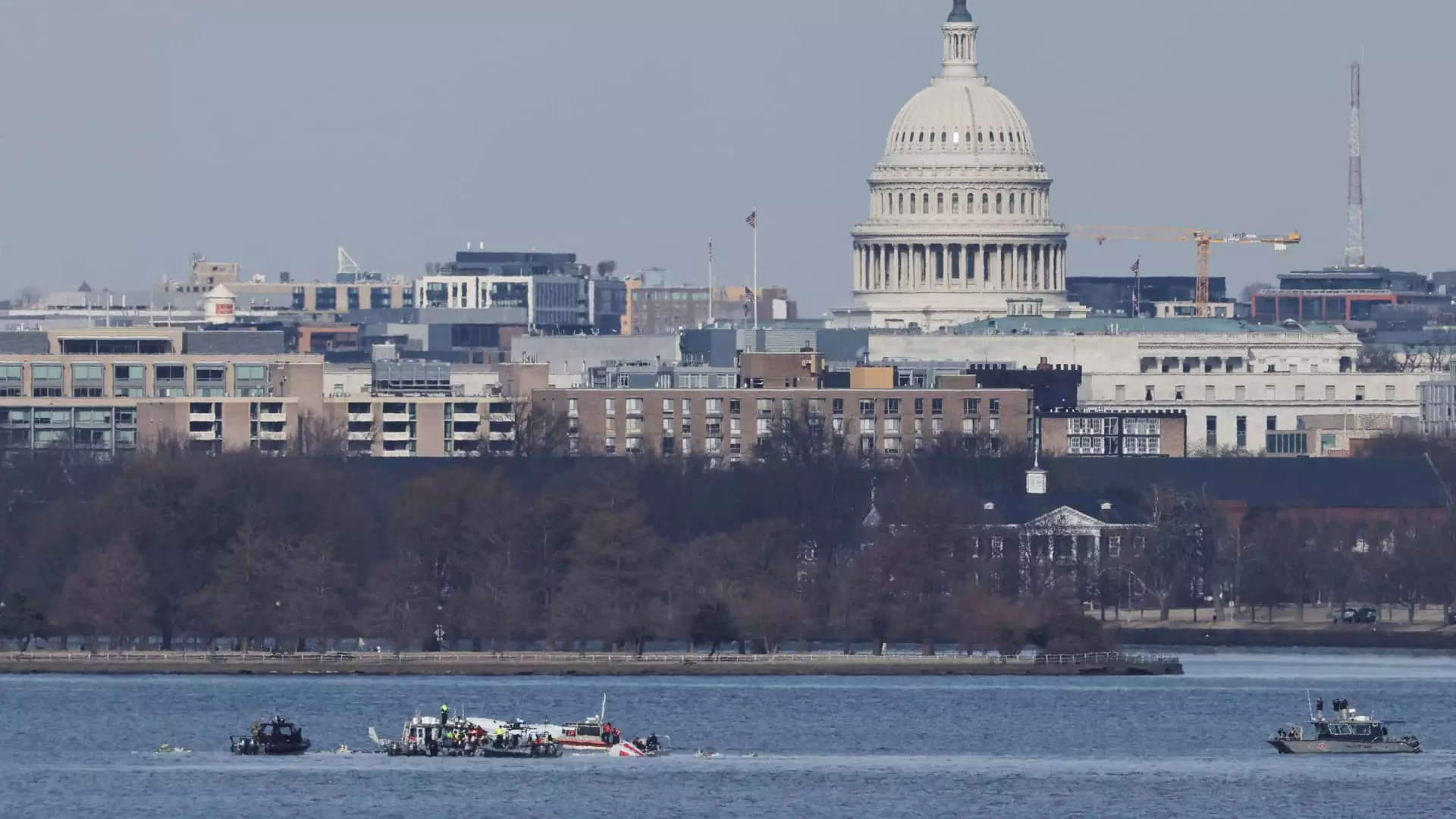On a fateful Wednesday evening over the Potomac River, a catastrophic event unfolded that would become ingrained in the collective memory of the nation. The collision between an Army Black Hawk helicopter and American Airlines Flight 5342 resulted in a devastating loss of life, claiming the lives of 64 passengers and crew on the jetliner, as well as the three individuals aboard the helicopter. This incident has reignited a dialogue about aviation safety protocols, air traffic control responsibilities, and military flight operations in densely monitored airspace.
The time of the crash, shortly before 9 p.m. ET, raises concerns not just over the specifics of the incident but also over the broader operational context surrounding Reagan National Airport. The jetliner, operated by PSA Airlines, a regional carrier under the American Airlines brand, was on final approach at an altitude of approximately 300 feet. Meanwhile, the Black Hawk helicopter was conducting a training flight—standard practice yet marked by the inherent risks of navigating the congested airspace.
Federal Aviation Administration (FAA) regulations dictate that helicopters operating in this busy area must stay below 200 feet. The circumstances leading to the helicopter’s apparent elevation breach and the ensuing tragic accident have led investigators to dive deep into flight data and cockpit recordings. This disaster starkly contrasts with a decade and a half of air safety in the U.S., a period that had seen no fatal commercial crashes, despite significant increases in passenger traffic.
The investigation is currently being led by the National Transportation Safety Board (NTSB), which is tasked with analyzing both the helicopter and jetliner data. NTSB Chair Jennifer Homendy underscored the ongoing nature of the investigation, emphasizing the importance of verifying the myriad pieces of evidence collected. Meanwhile, President Trump and Defense Secretary Pete Hegseth expressed concerns regarding the helicopter’s altitude, suggesting a strong indication that a procedural error may have occurred.
Despite the apparent complications such accidents present, it is essential that investigations adhere to meticulous standards, avoiding premature conclusions that may skew public perception or influence future regulatory changes. The FAA’s recent response to the incident has involved imposing stricter flight restrictions on helicopter operations in the D.C. area, recognizing the region’s unique air traffic complexities.
Another layer of complexity to this tragic event is the structure of air traffic control at Reagan National Airport. Reports indicate that typical protocols may not have been fully implemented on the night of the crash. Notably, a position that usually focuses solely on helicopter traffic was potentially combined with responsibilities for managing fixed-wing aircraft. This merging of roles raises unsettling questions about air traffic controller staffing and oversight during periods of high demand.
Poor staffing choices and the clustering of operational duties could signal an urgent need for reviewing and enhancing staffing protocols to prevent future incidents. The FAA must reinforce accountability and standardize operations to bolster aviation safety in busy airspaces across the nation. This tragedy calls for a reassessment not only in code and procedure but also in the training and preparedness of personnel tasked with monitoring one of the country’s most congested air travel hubs.
As investigators sift through the physical and digital debris of this distressing event, it is crucial that they dismiss speculation and instead adopt a rigorous, fact-based approach to uncovering the circumstances surrounding the collision. The need for clear communication and coordination between military and civilian aviation sectors is also critical. Bridging this gap will require collaborative efforts from various aviation and military stakeholders to ensure that visibility and adherence to regulatory guidelines are paramount.
Moreover, the implications of this crash resonate beyond the immediate loss of life; it beckons for a national discourse on aviation safety. This includes addressing systemic issues such as the ongoing shortage of air traffic controllers, the continued rise in passenger traffic, and the adaptation of air transport practices to meet contemporary demands while prioritizing public safety.
While the details surrounding the collision remain murky, the necessity for systemic reform in aviation practices has never been clearer. As the investigation unfolds, lessons gleaned from this tragic event will hopefully pave the way towards safer skies and prevent another heart-wrenching disaster in the future.

